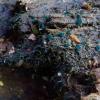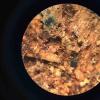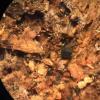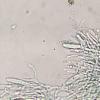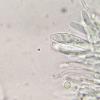
12-11-2025 09:25
 Viktorie Halasu
Viktorie Halasu
Hello, I need help with a pale terrestric Pseudom

11-11-2025 20:16
Bohan JiaHi, lastly I have found these tiny yellow decayin

09-11-2025 13:20
Hello.A tiny ascomycete, appearing as erupting gra

08-11-2025 00:29
 Francois Guay
Francois Guay
I found this species in Quebec, Canada, on herbace
Claussenomyces sp.?
Bigelow Tom,
08-07-2017 02:06
Hans-Otto Baral,
08-07-2017 08:52

Re : Claussenomyces sp.?
Dear Tom
interesting observation but more data are necesary to help here.
You say the largest apos are 3 mm. With a razor blade you should easily make a median section to show the excipulu. Is it brown or hyaline? Cell shape? Where is it gelatinous?
Did you test Lugol for the ascus apex?
Do you have images of the anamorph too?
At present I have no idea for a genus.
Zotto
interesting observation but more data are necesary to help here.
You say the largest apos are 3 mm. With a razor blade you should easily make a median section to show the excipulu. Is it brown or hyaline? Cell shape? Where is it gelatinous?
Did you test Lugol for the ascus apex?
Do you have images of the anamorph too?
At present I have no idea for a genus.
Zotto

